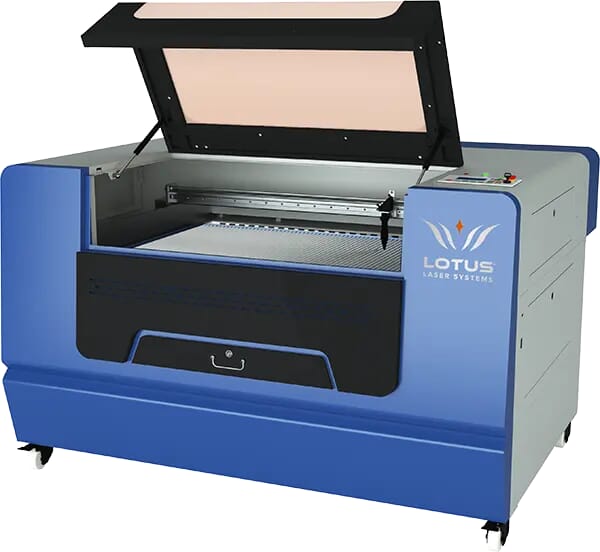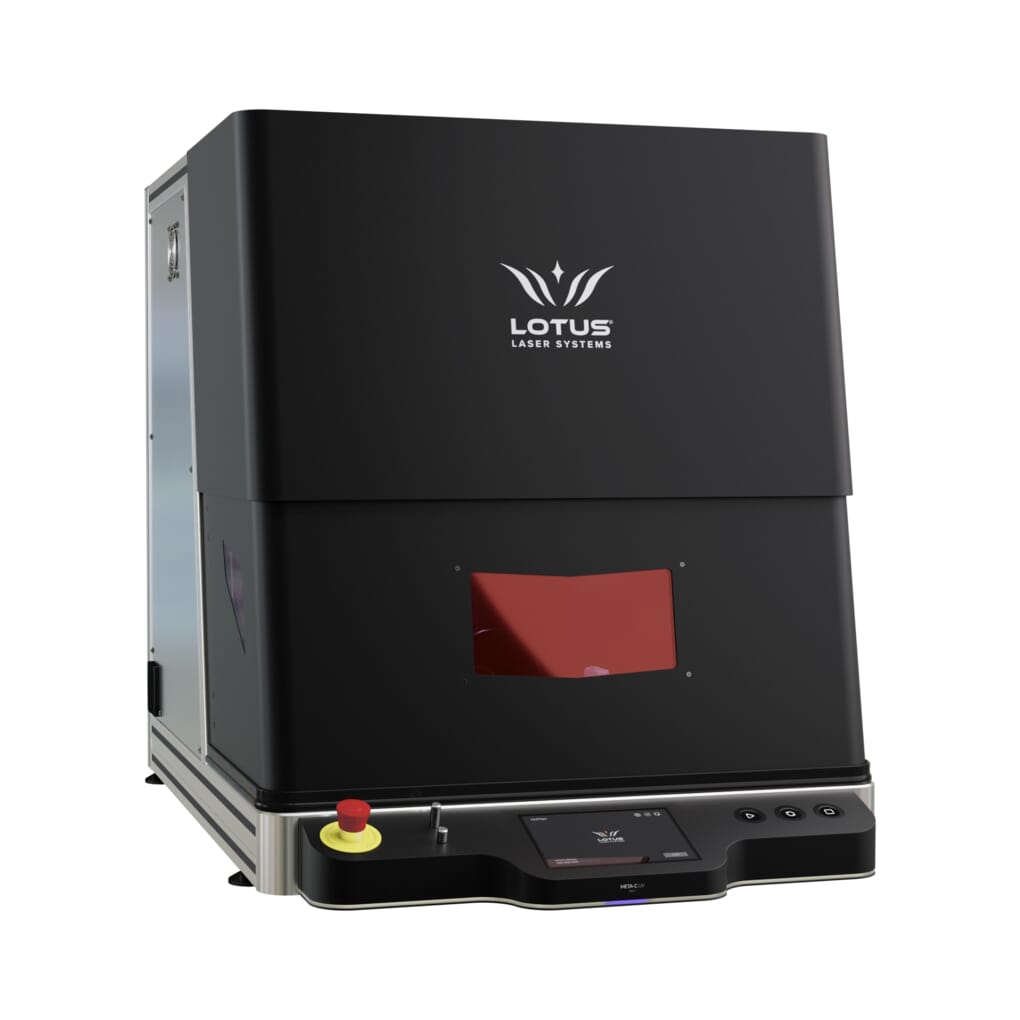About
CO2 vs. Fiber vs. UV Lasers – What’s the difference?
All lasers types are unique, each one will suit different materials and tasks. In fact, even within one type of laser source technology there are variations in quality, type, power and versatility.
So how do you know which TYPE to use?
Introducing Laser Sources
To make it digestible, we are going to split it into the main three types of lasers. They are all capable of marking or engraving to some degree, but not all of them will work effectively, so we will look at the pro’s and cons of each one.
Further down the page there is information about the technology, how it works and a quick reference table. If you want to know what best matches your material then feel free to call us or drop our team an email.
Marking
Engraving
Cutting
Metals, Plastics, Leather, Stone
Metals, some plastics
Thin Metals, Glass*
Almost Everything
x
Thin films, PCB, Paper
x
Plastics, Acrylic, Wood, Leather
Most Materials
Industries
Jewellery, Electronics, Automotive, Aerospace, Personalisation
Glassware, Personalisation, Traceability, Medical, Military, Aerospace
Fabrication, Garments, Woodwork, Leatherwork, Education.
MARKING Flexibility
UV Lasers
UV lasers work a little differently to CO2 or Fibre as they do not damage the materials surrounding surface, using a far lower power form of marking. This makes them the best of the bunch when it comes to “marking”, suitable for anything from fruit, to glass, teflon, diamond, silicone, plastic and precious metals. You really can mark almost anything with a UV laser engraver!
How do UV laser marking systems work?
Operating at 355nm, UV lasers have a much shorter wavelength than the other technologies here. Using a process termed “cold processing”, UV lasers shoot high-energy photons in the ultraviolet spectrum that break the chemical bonds in the material which causes the material to undergo non-thermal process damage. This process does not produce thermal deformation (heat damage) on the inner layers and nearby areas of the target area.
A UV laser’s wavelength is one-third of standard wavelength lasers, therefore often referred to as third-harmonic generation (THG) lasers. This wavelength is achieved by passing a standard wavelength laser at 1064 nm through a non-linear crystal, reducing it to 532 nm, this is then passed through another crystal, reducing its wavelength further, down to the working 355 nm.
A shorter wavelength exhibits many benefits that lends itself to a range of industries with applications in plastic and glass marking. Compared to the other common laser wavelengths (532nm and 1064nm), UV lasers have a high rate of absorption across a broad range of commonly processed materials, including metal, plastic and glass. The high rate of absorption is due to the interaction UV light has with atomic bonds in the material. When subjected to UV light, the atomic bonds break as opposed to the material vaporising or melting. This reduces the heat affected zone (HAZ) and is the reason why UV lasers are given the name “cold lasers”, requiring less power to achieve a mark compared to otherwavelengths of light.
In summary, the UV marking process is extremely fine and controlled, making it great for delicate or accurate work. However, due to the process this technology employs, a UV laser marking system is not normally suitable for engraving or cutting.
Pros
- Suitable for marking the widest range of materials
- Great for delicate, accurate work
- Very low power requirements
- Long-life and maintenance-free period
Cons
- Not very suitable for cutting or engraving, except for a few applications such as thin films, PCB etc.
- More expensive than CO2
Marking & Etching
UV Applications
UV can be used on a wide range of materials, glass is one of the most popular applications due to the exceptionally fine detail that can be achieved.
Perfect for metals
Fiber Laser
Fiber lasers are the go-to option for part marking, engraving and especially metal. They are very well established in many industries and are often found on manufacturing lines, workshops and more, all around the world. Fiber lasers operating in the 1 μm region have the ability to mark near enough all metals found in industry. With its stable architecture, beam quality, high power outputs and efficiency, it is no wonder the fiber laser is the most commonly applied marking laser in the market to date.
Operating at the 1,064nm wavelength, they are very well suited to metals, but can also operate on a much wider array of materials. This is why they are the most common choice for traceability marks such as barcodes, QR codes and text. Plus, their use for other graphics on things like personalised items, switches, phones, jewellery, becomes more popular day-by-day.
How do fiber laser engravers work?
When a fibre laser meets an object it evaporates the surface material to expose deeper material, essentially “carving” by chemical and physical changes. These changes are caused by the light energy (photons) reacting in the target area.
Fibre lasers possess a high electro-optical conversion efficiency, in layman’s terms this means they convert more of the energy to light (compared to CO2). In reality, this means fibre laser systems require less power to effect a material, resulting in a low power consumption for a fibre laser marking machine.
Types of Fiber Lasers
There are two common types of fibre laser you will find offered from manufacturers, we offer both types to suit the users budget. The main difference between these types of technology is the variety of pulse width and frequency.
Q-Switched
These used to be the most commonly found type of fiber laser source, it is also the cheapest. They are typically not as efficient nor do they possess as wide a range of pulse modulations. In turn, this means they are less flexible than a MOPA laser and are much more prone to deforming different materials.
MOPA
A MOPA laser is much more flexible, they have become far more popular and widely available, but not all MOPA systems are the same. Good MOPA systems will have a wide range of pulse width and frequency adjustments available they can suit more materials and are less prone to creating unwanted deformations once setup correctly. However, as mentioned, MOPA laser sources are quite varied in themselves, with both quality and modulation versatility differing between manufacturers. Unfortunately, there are now many MOPA systems on the market with only one or two Pulse Width’s and PRF0, they will be marketed as suitable for metal, but won’t be particularly good at it as you would realistically want upwards of 5 Pulse Width’s to work effectively (our own systems have 16).
All Lotus Laser Systems’ fiber lasers incorporate the MOPA technology, and each have the ability to create very short duration pulses (and therefore lower pulse energies), reducing the heat imparted to the material. This reduction in the heat affected zone (HAZ) provides advantages when marking metal and plastic such as less burning at the edges, and a more homogeneous, higher contrast marking.
Pros
- Versatile range of applications
- Long-life and maintenance-free period
- Fast engraving speeds
Cons
- More expensive than CO2 lasers
- Less versatile for marking than UV
- Not suitable for some organic materials (wood, glass, fabric etc.)
Examples
Fiber Laser Videos
-
Meta C 60w Fiber laser engraving green powder coated bottle
-
Meta C 60w Mopa Fiber laser engraving automotive part
-
Meta C 75w CO2 laser engraving powder coated bottles
-
Meta C 75w CO2 laser engraving a ceramic mug
-
Meta C 60w MOPA fiber laser engraving tools on 1 2m conveyor feed
-
uMeta laser engraving the inside of rings
-
uMeta laser marking a high quality photo to a keychain
-
Meta C MOPA fiber laser marking plastics
-
uMeta laser engraving steel and aluminium with some depth
Perfect for Cutting
CO2 Lasers
CO2 Lasers
CO2 laser cutters and engravers are excellent for organic materials like rubber, wood, paper, glass and ceramic. They are also the go-to choice for cutting acrylic and other plastics.
CO2 systems are amongst the most common type of laser used for industrial engraving and cutting. Smaller, low power units are those most commonly used by hobbyists due to their low cost (but also have a far lower operating lifetime).
How do they work?
CO2 lasers, as the name implies, utilise a gaseous gain medium which can be excited via a couple of methods, either by direct current (DC) or radio
frequency (RF) power supplies. Lotus Laser Systems focus on the latter when it comes to marking applications for a plethora of reasons. To outline a few, RF CO2 lasers are: smaller in size, have greater power stability, operate at lower voltages and have a superior service life compared to the DC variant.
Performance wise, users will benefit from the faster response time and fine output power adjustment when marking materials, but may be limited by the larger spot that results from the 10600 nm wavelength.
RF CO2 lasers can reach high power output figures but often require liquid cooling to prevent thermal distortion of the laser cavity. Lotus Laser Systems will provide a matching industrial water chiller, so the laser system is ready for operation as soon as it is installed.
FORMATS
Plotter (Plotter Laser)
A plotter system is a motion system that usually contains several stepper or servos, rails and belts. Attached to this are a series of 3 or 4 mirrors that deliver the beam via deflection to a focus carriage that usually contains a single layer plano-convex lens.
Whilst operating, the lens moves over the work area, which is usually large and rectangular in shape, to deliver the focused laser to the work piece.
Sealed (Galvo Laser)
This is a sealed unit, typically containing 2 mirrors that are attached to galvanometers. The beam is focused through a fixed lens known as an F-Theta lens that at the 1µm wavelength. The work area is constraint by the characteristics of the lens and is usually quite small and circular in shape. Technically this is known as a beam deflection laser.
TECHNOLOGIES
DC CO2 Lasers
These are the most common type of lasers found in manufacturer systems as they are relatively inexpensive. Although effective, they are slower than RF systems. Moreover, the laser power output will gradually decline and they have a shorter working lifespan (although manufacturers may quote 10,000 hours, this is only when used at low power settings).
RF CO2 Laser Systems
RF systems may be more expensive, but the benefits often out way the cost. We opt for this technology in many of our machines so they can operate at much higher speeds, in fact, our systems are typically more than twice the speed of other manufacturers. Unlike DC, the power output of the laser will remain virtually constant over its lifespan. Moreover the quality of the beam delivery and a life expectancy can be over 20,000 hours (almost 8 years of single shift work), so it’s a “no-brainer” when looking at CO2 laser cutters.
Pros
- Can mark organic materials and glass
- Good engraving speeds
- Lower cost (excluding galvo lasers)
Cons
- Shorter lifetime
- Difficulties marking metals
- Less accurate than the other technologies
MACHINE
Recommendations
Here at Lotus Laser Systems we manufacture all types of laser machines, built in the UK and able to suit almost every application. Our experts are always on hand to help and recommend you on which configuration best suits your needs.

















